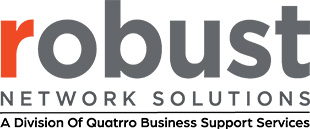In a hybrid multi-cloud world, the cloud is often at the heart of most digital transformation strategies. The future of work consists of empowering employees to be more productive with the flexibility to work anywhere on any device and at any time. The IT infrastructure inside any small business will underpin the safe movement of data, serving clients, manage employees, and growing of the business.
After many years in business, many enterprises find that legacy technology and applications prevent them from breaking free from their in-house data centers. A failure to upgrade their legacy infrastructure often limits their capacity to innovate and prevents teams from taking an organization to the next level.
Are the foundations of your infrastructure responsible for creating a complex environment that is slowing down deployments and increasing costs? Maybe it’s time to reduce IT complexity, reduce costs and boost productivity. Whether you are building a new IT infrastructure from scratch or exploring how you can leverage cloud technology, here are a few things to consider when embarking on a journey to ensure your IT infrastructure is fit for a digital age.
Cloud Solutions for Small Business
There is an unavoidable fact in our increasingly digital world where every user and business will have more data tomorrow than they have today. It’s critical that you remember this when designing your IT infrastructure. Your IT systems need to be simple yet scalable and cost-effective. As your business expands, you will need to make it easy to add or remove components for maximum efficiency. Most companies will have a combination of on-premises hardware and cloud services. This hybrid approach offers the best of both worlds. But its cloud servers hosted remotely in data centers that provide more flexibility and scalability than onsite units. In many cases, a single business server hosted in the cloud can handle all of your:- Email hosting
- Cloud storage
- Website hosting
- File sharing
- Hosting of apps such as customer relationship management (CMS) systems, collaboration software, and more
- Business-critical back-ups
- Virtual desktops for employees, which are individual workstations that use a central server for their computational power
Backup Servers
With employees working from home and the office, there are increasing concerns about cyber and ransomware attacks. As a result, an effective disaster recovery plan covering backups and ensuring multiple contingencies in place is no longer just a nice to have. First and foremost, you need assurance that current files, applications, settings, and other elements of your digital infrastructure can be quickly restored quickly when something goes wrong. One of the most significant weaknesses of managing everything on-premises is that it creates a single point of failure. If your local hardware fails or your office is hit by a disaster such as fire or flooding, you lose everything. By opting for a well-architected IT infrastructure in the cloud, your servers and data are not just in one physical location.Physical Storage
For obvious reasons, many businesses choose to keep all their storage in the cloud. But having physical hard drives onsite can provide extra peace of mind too. For example, having immediate access to business-critical data or processes in the event of an internet outage or a cloud provider suffers a cyber-attack. The perfect combination of having onsite and cloud backups will help improve resiliency while also maintaining continuity, even in a worst-case type of scenario.Computers
In the old days, a new business would buy computers for their employees. But the days of IT only providing a new employee with a PC, monitor, keyboard, and mouse are long gone. Along with traditional desktops, thin clients, laptops, tablets, and smartphones, the bring your own device (BYOD) movement has changed every employee’s expectations. Offering employees greater flexibility around how they connect and what devices they use could transform their productivity. But, again, there are multiple options to consider, and one of the many reasons you should have a conversation with a support partner you can trust who has been on this journey many times.Internet Connection
High-speed internet is possibly the most critical service for businesses of all sizes in every industry. However, for small businesses and start-ups, their success or failure is often determined within the first six months to a year of launching. If you do not have the luxury of a managed office, you must identify and implement a business broadband connection with a record of high availability. It’s crucial that you don’t underestimate how cloud applications, VoIP telephones, and video conferencing calls will add to your organization’s bandwidth demands. If your internet at home goes down, you might choose to tether from your smartphone. But as a business, you will require a provider that guarantees a service level that shows they can provide the high bandwidth that has become the lifeblood of every business.The Software You Need for Your IT Infrastructure
The software you use will depend on the services your business provides. However, a good starting point for many small businesses is standard tools such as:- Microsoft Office
- Google Workspace
- Zoom, Teams, or another video conferencing tool
- A customer relationship management (CRM) solution, such as HubSpot
- Scheduling, inventory, or shop management software
Infrastructure for Your Communication Needs
For many small businesses, the only communication methods needed are email and phone calls. Others require text messaging or one or two conferencing tools. You can use a tool like Microsoft Teams to cover instant messaging, video conferencing, and file sharing all within one solution. However, if you need a (VoIP) system for phone calls, you may want to explore how a unified communications setup could transform your business. These solutions enable your business to integrate emailing, calling, instant messaging, text messaging, videoconferencing, and file sharing all under one roof. You can also have the texts of calls automatically transcribed and sent to your email address or forwarded to your employees’ inboxes. Once again, it’s critical to measure your current network bandwidth before implementing any new solution. Packet loss caused by either latency or jitter can also produce a poor experience for your employees and clients. Get it wrong, and you can expect a rise in support tickets complaining of calls cutting off and crackly lines. But a good support partner can offer a customized network solution for your business that provides the right balance of speed and redundancy.Securing Your IT infrastructure
Mark Cuban once famously said that “Data is the new gold.” Protecting your greatest asset has never been more critical. A robust cybersecurity solution is essential to ensuring business continuity, resiliency, and uninterrupted service to customers. In addition, many businesses need to stay in line with legislation regarding data security. It’s often best to outsource your cybersecurity to professionals with the knowledge and experience to get it right the first time instead of risking data breaches, theft, malware, and ransomware attacks. A cybersecurity solution for your IT infrastructure will likely include:- Firewalls positioned between your network and the internet to filter out malicious content going in and out of your system
- Web application firewalls to protect apps that run over the internet
- Anti-malware and anti-virus software that automatically updates with the latest threat intelligence data

